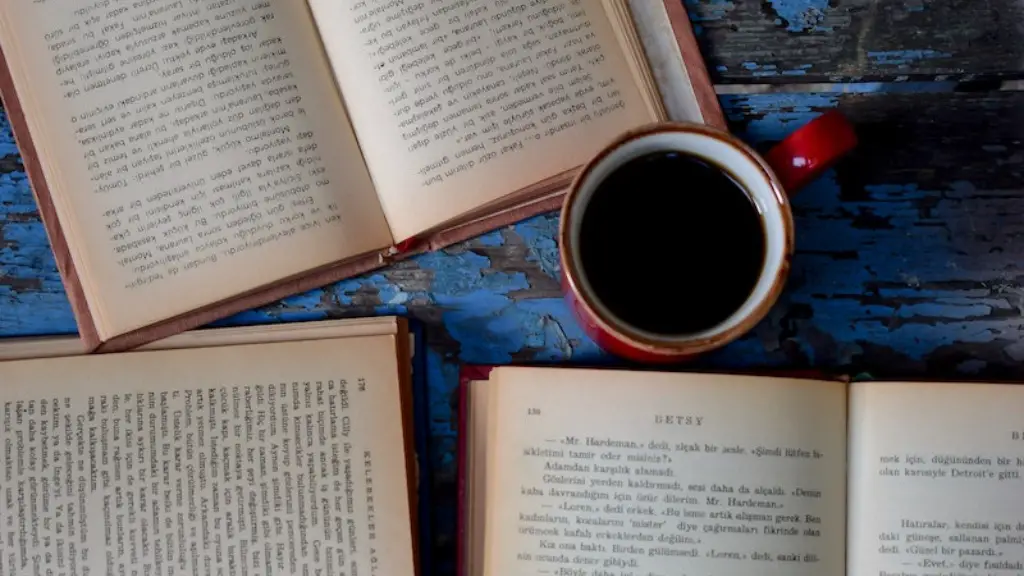Definition of a Line of Poetry
A line of poetry is defined as a division of a poem, usually so arranged as to form a unit of sense. Generally, lines of poetry are arranged in a specific pattern that follows a consistent flow of metre, rhythm and rhyme. This can be defined in a technical sense of metre and rhythm, but also in a more general sense of a fluidity, flow and guidance of sound. This is achieved through the use of language and cadence.
The Different Forms a Line of Poetry Can Take
A line of poetry can come in a variety of forms, from free verse to rhymed verse, from short to long, from neat and singular to sprawling and multi-phrased. Each of these comes with its own benefits and particular qualities. For example, rhyme can add a performative, playful element to a poem, while free verse can allow for more exploration and personal expression. Short lines generally create a faster pace, while long lines can create a more languid, languorous atmosphere.
The Different Kinds of Lines
The study of poetry often focuses largely on lines; this is because a line is the raw material from which a poem is made. A line typically consists of words, but can also include punctuation, images and other poetic devices. As such, there are many different kinds of lines that can make up a poem. These include end-stopped and enjambed lines, catalogues, refrains and units of repetition. They can also be broken down further into their components; the cadence, metre and rhyme scheme.
The Use of Cadence, Metre and Rhyme
Cadence is the use of sound or rhythm to connect words, while metre is the use of regular patterns to create a rhythmic sound. Rhyme is the most famous of all the poetic devices, referring to the repetition of a particular sound between two or more words. All three aspects can be used to create a line of poetry, by either subtly or explicitly linking words. For example, a line of poetry can use a steady beat to create a powerful message, or can employ more lyrical, flowing patterns to create illusions of time and emotion.
The Impact a Line of Poetry Has
A line of poetry is composed with both structure and emotion in mind; this is why it can often have a profound impact on the reader. It has the ability to evoke a range of feelings and memories, as well as having the ability to move and transport the reader to different places. Each line is its own unit of language, and can create a powerful and emotive image that is full of vividness and colour. This is why a line of poetry is often its own whole, separate entity, as well as an integral part of the entire poem.
The Enduring Power of a Line of Poetry
A line of poetry has the capacity to endure and to remain with the reader long after it has been read. It has the power to fascinate, to intrigue, to make one think and to evoke emotion. It is both a unit of words and a notion of something greater, and its power lies in its ability to evoke something unique in each and every one of us. A line of poetry can be either provocative or peaceful, simple or profound, and will often remain with us long after we have experienced it.
Exploring the Different Types of Lines in Poetry
Lines of poetry can come in a variety of forms, from short to long, from neat and singular to sprawling and multi-phrased. Each has its own particular qualities, such as the use of imagery, the power of rhythm, and the capacity to evoke emotion with words. These forms can often be combined in the same poem to create a sense of flow and to create new meanings and ideas. Exploring the different types of lines that can be used in a poem can be a rewarding experience that can bring a wide range of effects to a reader.
The Many Faces of a Line of Poetry and Its Effect on the Reader
The effect of a line of poetry on the reader can range from gentle and subtly lingering to powerful and dynamic. A line of poetry can be both tranquil and powerful, depending on the way it is crafted and the effect it has on the reader. It can confuse and excite, challenge and comfort. A single line can evoke so much emotion and thought from the reader, and can often stay with them long after it has been read. It is testament to the potency of a line of poetry that it can have such a powerful effect on the reader.
The Development of a Line of Poetry
Writing a line of poetry is an intricate process that requires skill and dedication. It involves crafting each line to perfection, creating a sense of cohesion and flow throughout the poem. Achieving this requires much practice, as the writer must be aware of the language they are using, as well as how it can be used to create a desired effect. Working with words can also involve exploring techniques such as alliteration, rhythm and rhyme, and can often involve trial and error, as perfection is rarely achieved in one go.
A Line of Poetry as a Reflection of Self
A line of poetry is often the reflection of not only the writer but also of the reader. This is because when a poem is read, it can often evoke different feelings, thoughts and ideas in the reader. In this way, a line of poetry can become an expression of the reader’s own feelings, thoughts and emotions. This is why it can often move and resonate with the reader in a profound way, and why it has such an enduring power.
A Line of Poetry as an Essential Form of Expression
Writing a line of poetry is an essential form of expression. Not only does it give the writer an outlet to express themselves, but it can also be a powerful form of communication. A poem can be read by anybody, anywhere, at any time, and can bring comfort, joy and enlightenment in equal measures. It is testament to the power of the written word, and to the power of a line of poetry in particular, that it can have such an impact on a reader.


